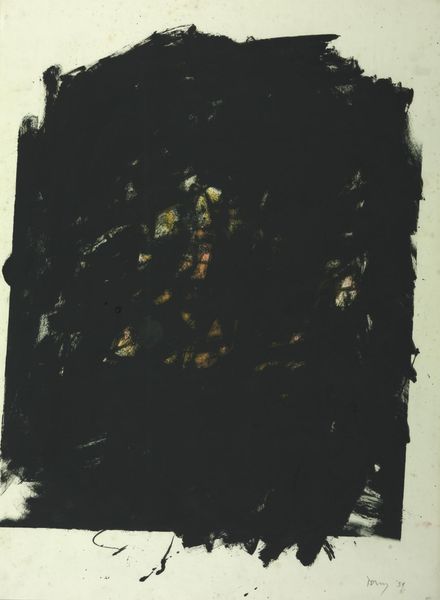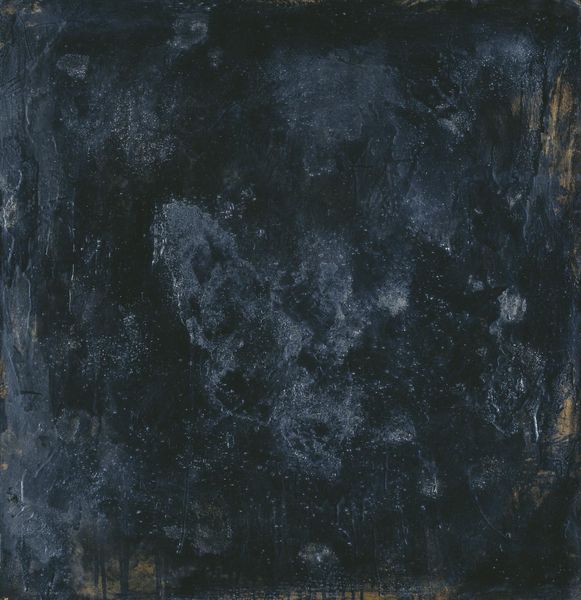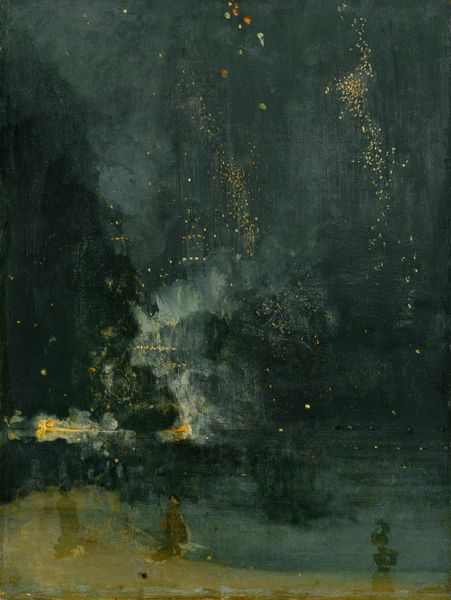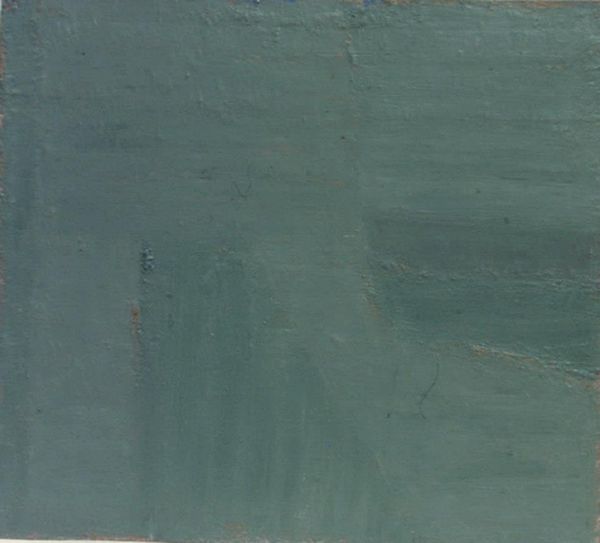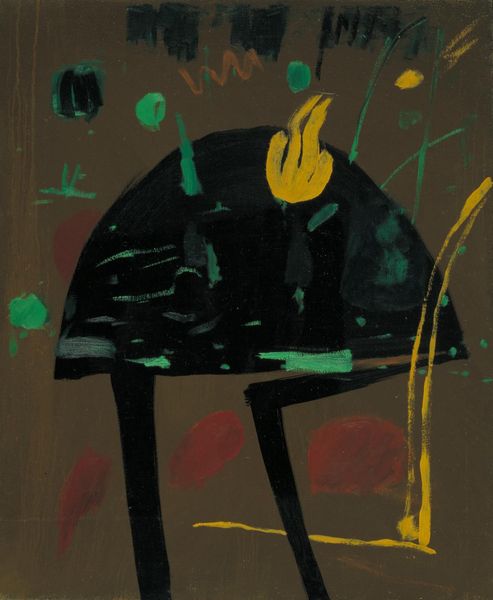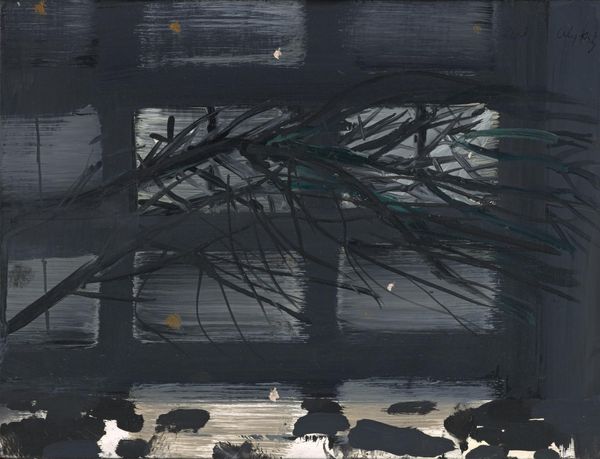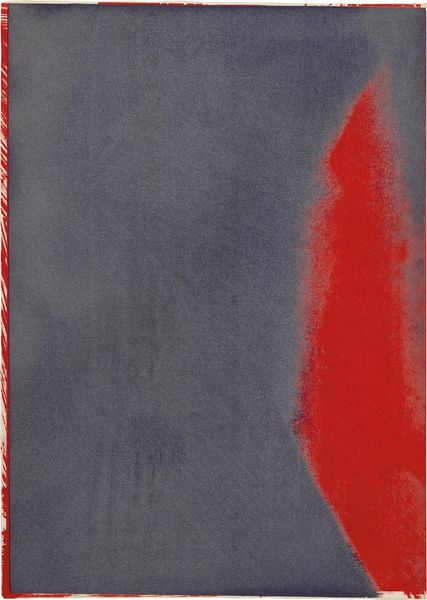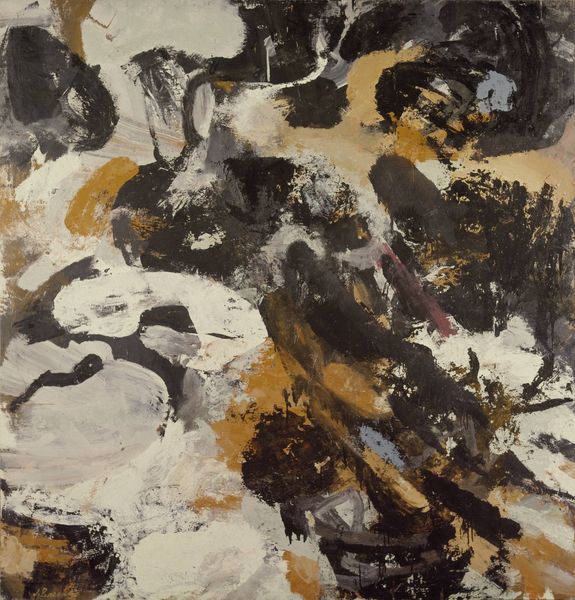
painting, oil-paint
#
abstract-expressionism
#
painting
#
oil-paint
#
painted
#
abstraction
Copyright: Robert Motherwell,Fair Use
Curator: Standing before us is Robert Motherwell's "Iberia No. 2," an oil painting dating to 1958 and now residing here at the Tate Modern. Editor: It hits you immediately, doesn’t it? A somber weight above, pierced by this... defiant, almost desperate gold. There’s a raw, unresolved tension hanging in the air. Curator: Motherwell, deeply affected by the Spanish Civil War, channeled that experience into his "Iberia" series. The somber field, a field of muted indigo and black, is seen as a lament for the suffering endured under Franco's regime. Editor: The Iberian Peninsula becomes a symbol then, layered with complex cultural memories. The color choices resonate on an emotional level. Gold usually signals something precious, divine even, here it is fragmented, diminished, against darkness. Curator: The bold brushstrokes speak to Abstract Expressionism’s tenets, it embodies both individual freedom of expression and that collective sense of post-war anxiety. The painting operates within the sociopolitical atmosphere, expressing the angst through pure form and color. Editor: What intrigues me most is how the abstract nature allows for varied emotional entry points. It feels like it distills both personal trauma and a larger sense of historical anguish into something almost elemental. The scale too must have added something, it confronts you. Curator: Yes, and considering how the work came into the Tate's collection sheds additional light on how institutions come to represent shared heritage and shape its interpretation through time and taste. Editor: Looking at "Iberia No. 2" has given me insight into how art bears witness. Beyond surface aesthetics, we uncover buried psychological dimensions as well as socio-political undercurrents—and Motherwell uses these in concert. Curator: Exactly. It’s a reminder of how much history, and human emotion, abstract forms can actually convey.
Comments
No comments
Be the first to comment and join the conversation on the ultimate creative platform.

